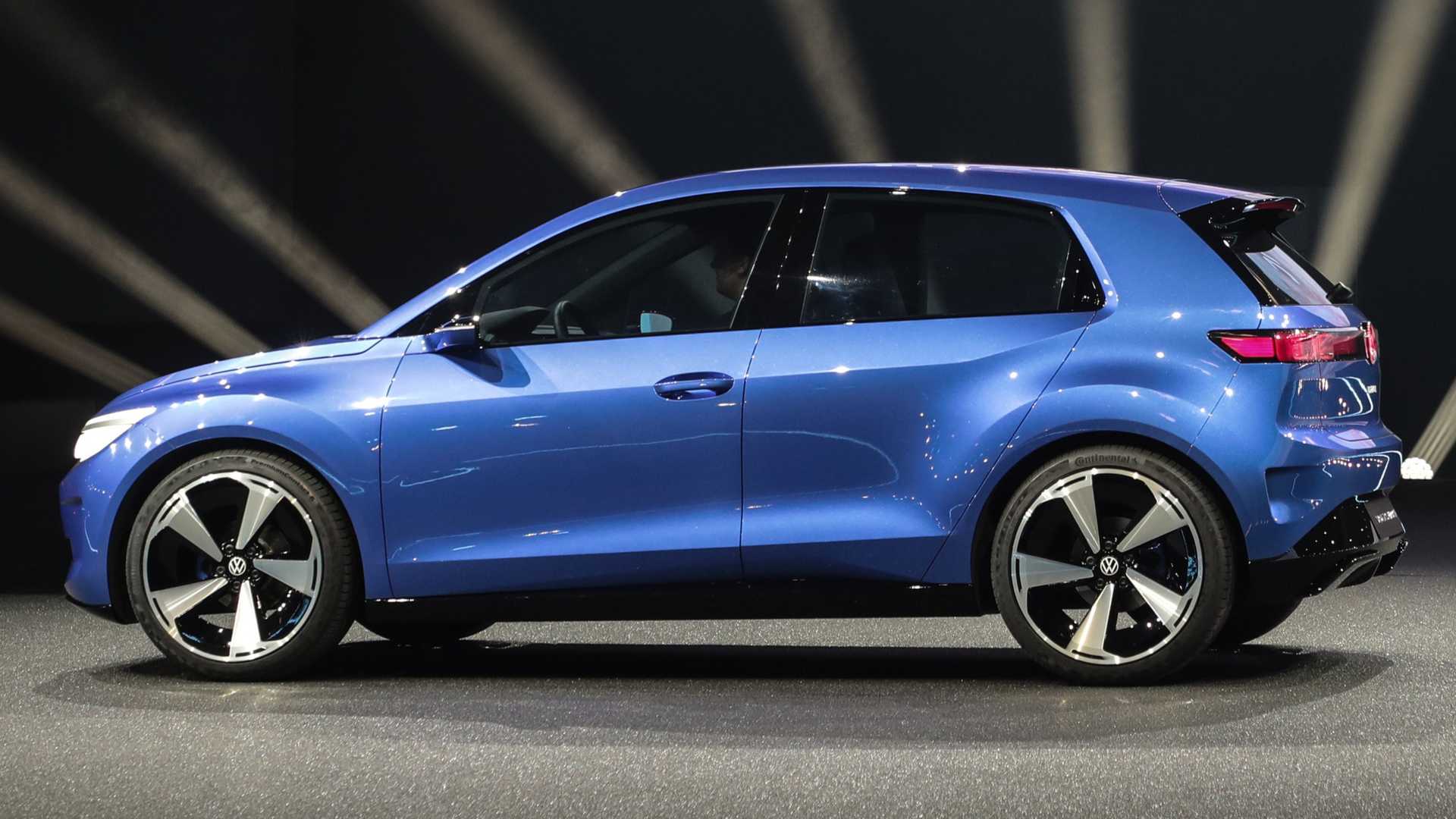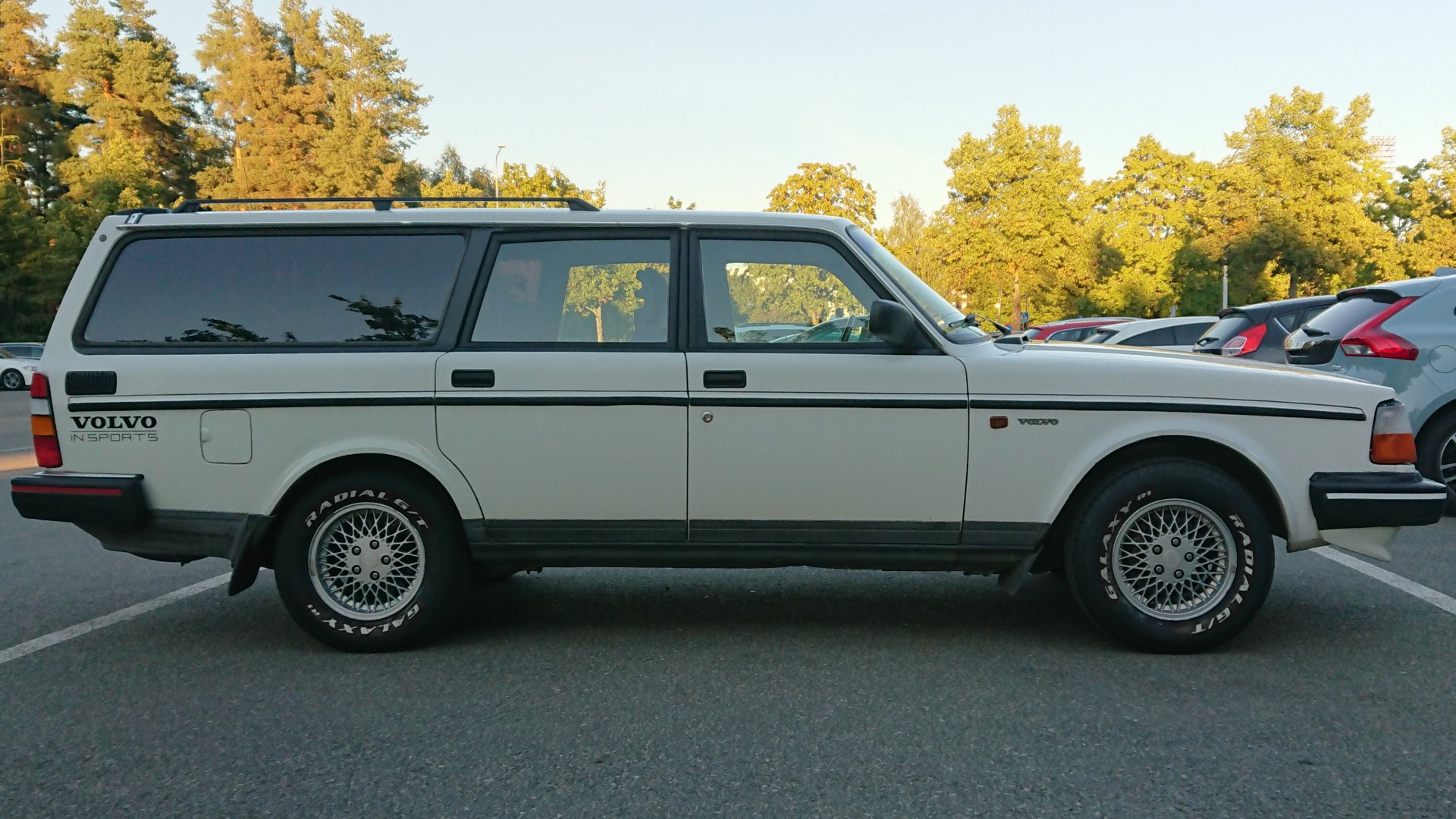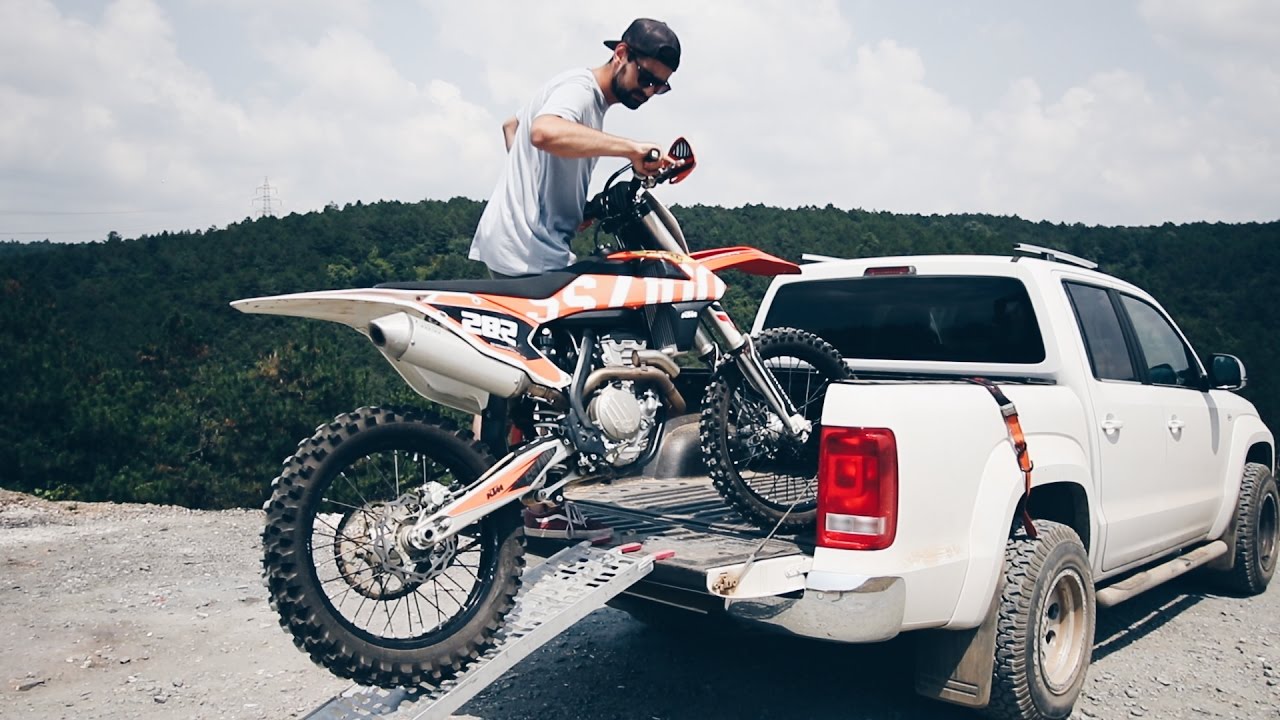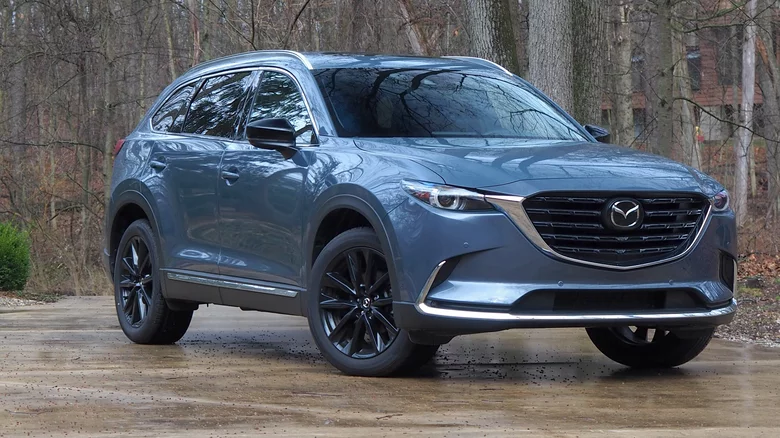- 3,904

- Hoboken, New Jersey
The Maverick is "compact" by today's standards, given how large the F-Series has grown, but the Chicken Tax will prevent any truly compact truck from entering the US market.
Well yes, but a manufacturer could just relatively easily move production into the US or use any of the workarounds done in the past. The bigger issue is the CAFE requirements, which is what my post was talking about. Even if there was no Chicken Tax, CAFE would not make it financially possible to import small trucks into the USThe Maverick is "compact" by today's standards, given how large the F-Series has grown, but the Chicken Tax will prevent any truly compact truck from entering the US market.
This video is a very entertaining deep dive into everything wrong with oversized cars, and how we got here. I couldn't agree more with everything he says.

VW Head of Design Andreas Mindt: "It's more difficult to design a small car than a hypercar".
In an interview with Top Gear magazine, Mindt said it was "so easy" to design the Bentley Batur as opposed to the Volkswagen ID2.all concept – the first project at his new job. He explained that designing the Continental GT-based Batur was easy because it's a wide and low car with a long hood. "It’s like taking a penalty in football without a goalkeeper. It's easy to do. A lot of people think hypercar designers are geniuses, but it's so easy to do. To make a small car like the ID.2all you have to work hard, and people don't understand that. It's harder to design. When you look at things like the Fiat Panda – those are the genius designers in my eyes, not the ones who do hypercars. I don’t want to hurt anyone, but I know both sides of it."

VW Design Boss Says It's More Difficult To Design A Small Car Than A Hypercar
Chatting with Top Gear magazine, Volkswagen design chief Andreas Mindt spoke about how easy it was to design the Bentley Batur as opposed to the VW ID.2all.www.motor1.com
Designing [good] cheap things is always way harder than designing expensive things.VW Head of Design Andreas Mindt: "It's more difficult to design a small car than a hypercar".
In an interview with Top Gear magazine, Mindt said it was "so easy" to design the Bentley Batur as opposed to the Volkswagen ID2.all concept – the first project at his new job. He explained that designing the Continental GT-based Batur was easy because it's a wide and low car with a long hood. "It’s like taking a penalty in football without a goalkeeper. It's easy to do. A lot of people think hypercar designers are geniuses, but it's so easy to do. To make a small car like the ID.2all you have to work hard, and people don't understand that. It's harder to design. When you look at things like the Fiat Panda – those are the genius designers in my eyes, not the ones who do hypercars. I don’t want to hurt anyone, but I know both sides of it."

VW Design Boss Says It's More Difficult To Design A Small Car Than A Hypercar
Chatting with Top Gear magazine, Volkswagen design chief Andreas Mindt spoke about how easy it was to design the Bentley Batur as opposed to the VW ID.2all.www.motor1.com
It comes down to two questions: how large is large, and how much snow?If you want to tow a large camper, or a track vehicle, you need a pickup generally speaking. Nothing else seems to have the towing capacity. Few people do that of course, but it does have a place in suburbia. If you want to clear snow and ice balls, you need a bit of extra ground clearance.
It comes down to two questions: how large is large, and how much snow?
My old RWD estate is cleared to tow 3.500 lbs and it has about eight inches of ground clearance. I'd imagine any modern small truck to be capable of the same, or at least they had better to or they suck hard at being trucks. The problem is that there's just about nothing between that and the 8.000+ lbs capacity of the "small" American truck, which in reality in obnoxiously large. The actual small truck is the Ford Ranger, not the F-150 size class it's usually thought to be, and it would fit a very large part of the users' needs just fine but they still buy the F-150s and RAM 1500s because everyone else has one too.
Big old Swedish tractors. The 240 pictured, I also have a 940 which is also high enough for me to check the bottom rustproofing by just crawling under the rocker panels on my back with no jack needed. The lowest part on each of them is the rear end banjo and they're not lifted in any way, they were just built like that. No idea why even modern SUVs and especially crossovers are much lower since they're actually attempting to have ground clearance.8 inches? I'm curious as to what your RWD estate is.
It always wanted to be a race car when it grows up.

Big old Swedish tractors. The 240 pictured, I also have a 940 which is also high enough for me to check the bottom rustproofing by just crawling under the rocker panels on my back with no jack needed. The lowest part on each of them is the rear end banjo and they're not lifted in any way, they were just built like that. No idea why even modern SUVs and especially crossovers are much lower since they're actually attempting to have ground clearance.
Those are 205/70R14 tyres on it for the record, ~25 inches in diameter. Eight inches can't be much off.
My old RWD estate is cleared to tow 3.500 lbs
Those figures have something very weird in them. The 940 is five inches even to the mudflaps, and indeed eight to both the front lip and the sides. Think about it yourself - that 7,6 inches is about equal to the length of your own palm with fingers included. Can you crawl into such a space and do an oil change in there? Probably not, and in reality there's more. Then again that's what has been done to both my cars several times but my friend and me are skinny guys - it's getting our heads there that is the biggest problem, and from the tip of the nose to the back of the head is pretty much eight inches in my case.4.7 inches? Looks like the 940 is 4.1".
Eight struck me as rather a lot. I can get under my FX-35 to do oil changes with no jack. It has 7.6 inches. My Sienna sits about an inch lower and it is noticeable in the winter. Not a huge deal, but I think it makes a difference.
In reality. Some weird US protectionism to prevent people from buying foreign vehicles that could do the job just fine to sell more bloated domestic trucks?In Europe.
Yet the same drivers, and you, apparently think that 310 lb/ft, ie. 128% more, is completely fine in a 6050 lbs maximum weight vehicle to tow an extra 7500 lbs, ie. another 120% over its indeed maximum weight. The overall weight to be moved is 108% higher than in the first example. Those figures are from the US approved Ford Ranger with a 2.3 Ecoboost but I guess they're OK for you as they're not from Europe.[...] "3000 pound wagon originally designed in the early 1960s with 136 lb-ft of torque towing an additional 120% over it's curb weight" would be considered a safe option in the United States by approximately none out of none drivers.
Why yes, I expect a pickup truck available with an available factory tow package is probably completely fine at towing its rated towing weight; particularly since the weight of the tow vehicle and it's size/wheelbase has a disproportionate impact on how stable it is as a towing platform. It's no different from how I have little reason to expect that cars sold in India or Southeast Asia are probably largely deathtraps compared to cars sold in the US; so why you're having so much trouble grasping this is certainly odd.Yet the same drivers, and you, apparently think that 310 lb/ft, ie. 128% more, is completely fine in a 6050 lbs maximum weight vehicle to tow an extra 7500 lbs, ie. another 120% over its indeed maximum weight.
No, they're likely okay because they are rated for the United States market and thus are determined based on the needs of the realities of driving a vehicle towing something in the United States. That means going at US highway speeds and not 15-40 MPH under them (I'll get to this in a second). That means getting through stop and go traffic in US cities and the performance demands of such (which the Volvo wasn't very good at meeting when not towing something even when new). That means needing to drive through the Adirondacks pulling something just as well as driving through Kansas pulling something. To that end, when Ford reintroduced the Ranger on the US market they basically threw out the frame from the original T6 and replaced it with a significantly stronger fully-boxed one (as Chevrolet did the same with the Colorodo), implemented a modified suspension setup from an American supplier and introduced a substantially more powerful standard engine as the only option; among other more minor things. And they still rated the payload and towing capacity lower than some basic-bitch diesel T6 you can buy in Europe.The overall weight to be moved is 108% higher than in the first example. Those figures are from the US approved Ford Ranger with a 2.3 Ecoboost but I guess they're OK for you as they're not from Europe.
I found this British Volvo owner's forum thread about it.My old RWD estate is cleared to tow 3.500 lbs
I think you missed @Greycap actual point which was not that people should be buying Volvo 240s to tow stuff (which they shouldn't), but the US Market is missing an entire class of vehicle (nearly) that can tow in the 3,500lb range without being a full size pickup.Doubling down on a conspiracy theory and further implying xenophobia may be to blame after the reasoning why it was so dumb was already explained in detail is certainly a choice.
Why yes, I expect a pickup truck available with an available factory tow package is probably completely fine at towing its rated towing weight; particularly since the weight of the tow vehicle and it's size/wheelbase has a disproportionate impact on how stable it is as a towing platform. It's no different from how I have little reason to expect that cars sold in India or Southeast Asia are probably largely deathtraps compared to cars sold in the US; so why you're having so much trouble grasping this is certainly odd.
For example, something like a Volvo wagon originally designed in the early 1960s might suffer as a tow vehicle pulling over its own weight when in comparison to a modern pickup truck doing the same with a 2-foot longer wheelbase, foot wider width and an additional 1500 pounds sitting atop a separate frame; but the reality is that most people with the latter will use it to tow the same load as the former is "capable of" much more comfortably and safely.
No, they're likely okay because they are rated for the United States market and thus are determined based on the needs of the realities of driving a vehicle towing something in the United States. That means going at US highway speeds and not 15-40 MPH under them (I'll get to this in a second). That means getting through stop and go traffic in US cities and the performance demands of such (which the Volvo wasn't very good at meeting when not towing something even when new). That means needing to drive through the Adirondacks pulling something just as well as driving through Kansas pulling something. To that end, when Ford reintroduced the Ranger on the US market they basically threw out the frame from the original T6 and replaced it with a significantly stronger fully-boxed one (as Chevrolet did the same with the Colorodo), implemented a modified suspension setup from an American supplier and introduced a substantially more powerful standard engine as the only option; among other more minor things. And they still rated the payload and towing capacity lower than some basic-bitch diesel T6 you can buy in Europe.
Why is that? Is it because Ford would much rather you buy an F-250 to tow a popup camper? Or is it maybe because what and how people tow things in Europe has little correlation with what and how people tow things in the United States, and the standards reflect that? Because if it's supposedly the former then maybe you can come up with an explanation for why companies that don't sell full size US pickup trucks have willingly colluded with the ones that do.
I was actually a bit more curious about something, though, so I looked into this:
I found this British Volvo owner's forum thread about it.
View attachment 1242514
That is not adequate performance for the United States market. It isn't even close. I'm somewhat skeptical it even is for Europe in 2023, or the United States by the end of the 1980s.
And, in fact, if we go to the very next sentence by that poster:
View attachment 1242515
And that's not saying anything about how that 3500 pound figure is with a tongue weight of only 165 pounds, also from that thread:
View attachment 1242542
View attachment 1242540
Which is not safely accepted practice for towing in the United States (it's in fact less than half of the lower end of the commonly considered "safe" scale), even if this wasn't already a light car with a narrow track and a short wheelbase. That suggests to me (and, yes, likely most people who drive in the United States who have towed something) that to tow with any actual measure of safety your maximum should be about 40% of what a 240 supposedly "can" tow. In fact, since the numbers are identical across the ocean, I suspect Volvo just lazily converted them rather than actually do anything to rate for the realities of the US market; since even a contemporary Caprice wagon (a much larger, heavier body-on-frame car on a much longer wheelbase with a much more powerful engine) had a rated towing capacity (without the tow package) of 2000 pounds but the tongue weight was substantially higher than the Volvo's at 240 pounds.
But yeah definitely an 80s Volvo is definitely relevant to the conversation of modern crossovers and pickup trucks. 🙄
The fact of the matter is, no matter how much you want to stick your fingers in your ears and talk about vast protectionist conspiracies and question the need to buy anything that's more capable than an old estate car, your opinion at how competent such a thing is at actually doing modern crossover things is irrelevant because the thing being rated isn't the same. At this point you're looking just as foolish as the people who insist that muscle cars from the 1960s were more powerful than anything through the 1990s because they really produced 500hp or whatever but were covered up because of "insurance companies" while also refusing to acknowledge what gross vs net HP is.
In reality. Some weird US protectionism to prevent people from buying foreign vehicles that could do the job just fine to sell more bloated domestic trucks?
I'd imagine any modern small truck to be capable of the same, or at least they had better to or they suck hard at being trucks. The problem is that there's just about nothing between that and the 8.000+ lbs capacity of the "small" American truck, which in reality in obnoxiously large. The actual small truck is the Ford Ranger, not the F-150 size class it's usually thought to be, and it would fit a very large part of the users' needs just fine but they still buy the F-150s and RAM 1500s because everyone else has one too.
That Greycap not only didn't understand the differences in how towing capabilities are rated in the United States versus elsewhere but in fact refused to acknowledge it when it was first explained to him (and, indeed, brought up a counter example as a gotcha attempt which is rated lower than it's international counterpart despite a more powerful standard engine and a redesigned stronger frame) goes pretty straight to the heart in questioning how valid his examples of "foreign vehicles that could do the job just fine" would actually be."The soccer mom with the 84 month car note for her F250 may be better served with a Ridgeline or Maverick or Colorado" or "There should be more variety in cars that can tow between 0 and 8000 pounds" and even "the chicken tax is a laughably protectionist policy that prevents domestic automakers from actually needing to compete"
Are there? Ones that aren't already Federalized? Keeping in mind that I already noted the Chicken Tax by name (though things like the L200 and Navara are probably too old to bother trying to reengineer for the US), we already have an example of a European car maker that for decades was doing lazy unit conversion in the United States to produce towing capabilities that's weren't actually within commonly accepted safe practices for towing in the United States; so ones that are sold abroad and here but aren't rated to tow what they are elsewhere can't just be assumed to be adequate. And people are already perfectly able to go buy any variety of midsized crossover they want and tow pretty much any U-Haul trailer they want. So what manufacturers are missing out? It would be nice if any normal sedan could be had with a tow rating in the US that let you pull something heavier than a small utility trailer instead of the blanket "1000 pounds" most of them have, but its getting to the point where it would be nice if you could even buy a sedan instead of a crossover as it was.There are tons of European and Asian made vehicles that are excluded from the US Market (practically speaking, we all know there are workarounds - but they aren't exactly market friendly) that would probably be a good fit for many people
This conversation just seems like its unreasonably off track. The original prompt of this back and forth was this comment from @DanoffNo, I don't think I did:
That Greycap not only didn't understand the differences in how towing capabilities are rated in the United States versus elsewhere but in fact refused to acknowledge it when it was first explained to him (and, indeed, brought up a counter example as a gotcha attempt which is rated lower than it's international counterpart despite a more powerful standard engine and a redesigned stronger frame) goes pretty straight to the heart in questioning how valid his examples of "foreign vehicles that could do the job just fine" would actually be.
If you want to tow a large camper, or a track vehicle, you need a pickup generally speaking. Nothing else seems to have the towing capacity. Few people do that of course, but it does have a place in suburbia. If you want to clear snow and ice balls, you need a bit of extra ground clearance.
It comes down to two questions: how large is large, and how much snow?
My old RWD estate is cleared to tow 3.500 lbs and it has about eight inches of ground clearance. I'd imagine any modern small truck to be capable of the same, or at least they had better to or they suck hard at being trucks. The problem is that there's just about nothing between that and the 8.000+ lbs capacity of the "small" American truck, which in reality in obnoxiously large. The actual small truck is the Ford Ranger, not the F-150 size class it's usually thought to be, and it would fit a very large part of the users' needs just fine but they still buy the F-150s and RAM 1500s because everyone else has one too.
I just want a narrow body cool Eurovan that isn't a Ford Transit or MB Metris ok? Citroen Jumpy, VW Transporter, Peugeot Traveler or even like a Toyota Alphard. Would any of those sell in numbers that would make a solid business case in the US even without the Chicken Tax? Almost 0% chance. They are still cool and the right size, IMO.Are there? Ones that aren't already Federalized? Keeping in mind that I already noted the Chicken Tax by name (though things like the L200 and Navara are probably too old to bother trying to reengineer for the US), we already have an example of a European car maker that for decades was doing lazy unit conversion in the United States to produce towing capabilities that's weren't actually within commonly accepted safe practices for towing in the United States, so ones that are sold abroad and here but aren't rated to tow what they are elsewhere can't just be assumed to be adequate. And people are already perfectly able to go buy any variety of midsized crossover they want and tow pretty much any U-Haul trailer they want. So what manufacturers are missing out? It would be nice if any normal sedan could be had with a tow rating in the US that let you pull something heavier than a small utility trailer instead of the blanket "1000 pounds" most of them have, but its getting to the point where it would be nice if you could even buy a sedan instead of a crossover as it was.
The takeaway I get here is that to tow a track vehicle or a camper, you don't need a full size truck, depending on how big they are - which I agree with. A USDM Frontier is rated to tow up to 6,700lbs. A Tacoma up to 6,800lbs. A Ranger up to 7,500lbs. All of those capacities should be enough for most track cars on a flat bed trailer, and many travel trailers.


Also not a bad vehicle if you need to open fire or load/unload a big group very quickly.

And that's not saying anything about how that 3500 pound figure is with a tongue weight of only 165 pounds, also from that thread:
Fair enough and preaching to the choir. I love vans...especially the right-sized ones they have all over Europe and east Asia. I do think vans (commercial and otherwise) would have a bigger foothold in the US if not for protectionist legislation - the smaller ones have proved quite popular with small businesses in denser cities (think florists, plumbers, etc). The only time I regularly see pickups being used in commercial settings is at construction sites...but even then they are typically just being used by subcontractors as personal vehicles. Flatbed trucks are useful for carrying material, but I rarely see pickups doing actual work. The problem with vans is that minivans are both too big now and too specialized. Then you have commercial vans which roughly fall into two categories: Tiny (Transit Connect) and Huge (Sprinter). We're missing the entire "medium van" category that exists in other parts of the world - probably because they would be too similar to minivans and not competitive with pickups due to tariffs. The other problem is that commercial vans are quite expensive. Even a base model Transit Connect is $34,000. The VW transporter is the right size - its not much longer than a Transit Connect but it has a much better shape (IE not such a long nose) and therefore has tons more capacity. They even look cool.For what it's worth, I did mean pickup truck and not specifically a heavy pickup truck.
I have a special hatred of pickup trucks because they seem to be bad at everything. They're bad at hauling people, they're bad at hauling cargo, and they're bad at being light, small, and sporty. They're really only good at two things. Getting a load of dirty stuff dumped in the back. And this first one is highly dubious. And the second thing is towing - especially if you're going gooseneck.
In terms of getting a load of dirty stuff dumped in the back, that scratches the hell out of the paint. I've actually used my minivan to get a load of gravel dumped from a front loader. How? I used a trailer I rented from u-hual and got the load dumped in the trailer. Rocks ping off of every surface, denting and scratching the sides and bed of the trailer in every fashion. The nice part about that is that the trailer is already scuffed up and doesn't have a nice perfect glossy finish to protect. But a truck? Especially the jacked up trucks I see everywhere? Those don't get anything dumped in them. They're usually painted and glossy, and too high to get anything out of the bed anyway.
I suppose one more thing trucks are good at is ground clearance, especially the ones jacked way up. But I imagine that's true of many SUVs and vans as well.
Edit:
And before someone says refrigerator moving or whatever, it's a PITA. You want a u-haul with a ramp. The ramp is very useful. I'll give you this though.

Also not a bad vehicle if you need to open fire or load/unload a big group very quickly.


I was gonna say...is it AWD? Because if you want a flat load floor and AWD pre-EV you need to raise the chassis, raise the ground clearance, but you don't want it looking tall and tippy like an Astro so you keep the roof a reasonable height, compensate by making it longer, but then the proportions are like a wagon and wagons aren't cool, so now you need to make it stylish and before you know it...As for snow...well that's not a concern of mine.

The T6 transporter actually was available with AWD. The CX9 looks good from some angles (like that one) but kind of ungainly from others. The utility advantage of sliding doors is huge.I was gonna say...is it AWD? Because if you want a flat load floor and AWD pre-EV you need to raise the chassis, raise the ground clearance, but you don't want it looking tall and tippy like an Astro so you keep the roof a reasonable height, compensate by making it longer, but then the proportions are like a wagon and wagons aren't cool, so now you need to make it stylish and before you know it...
